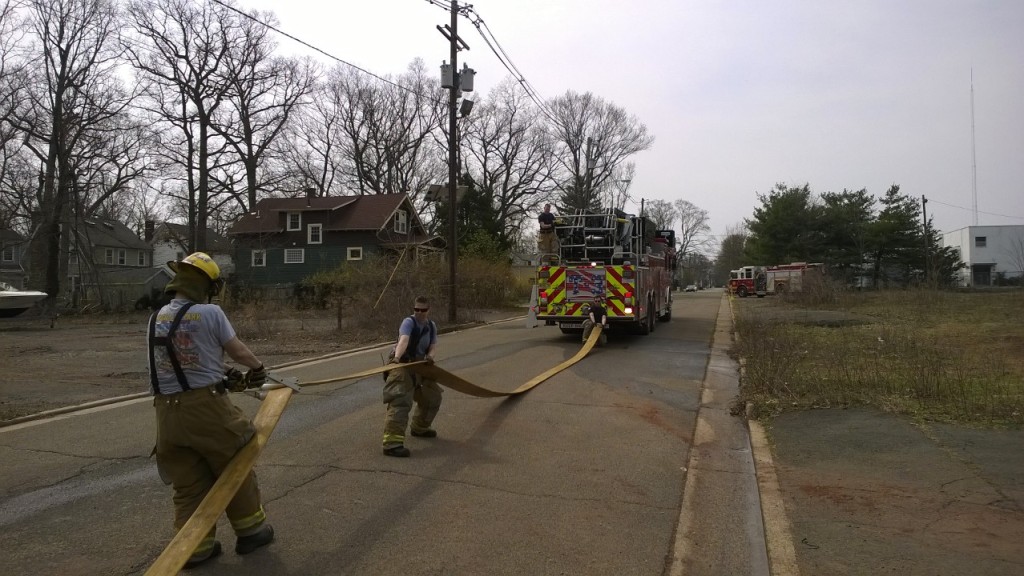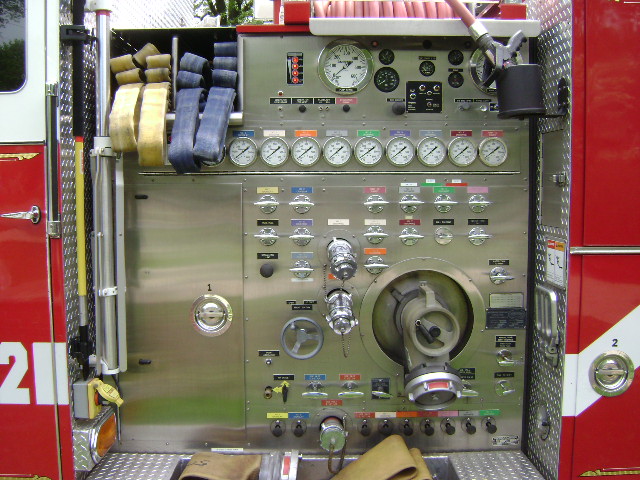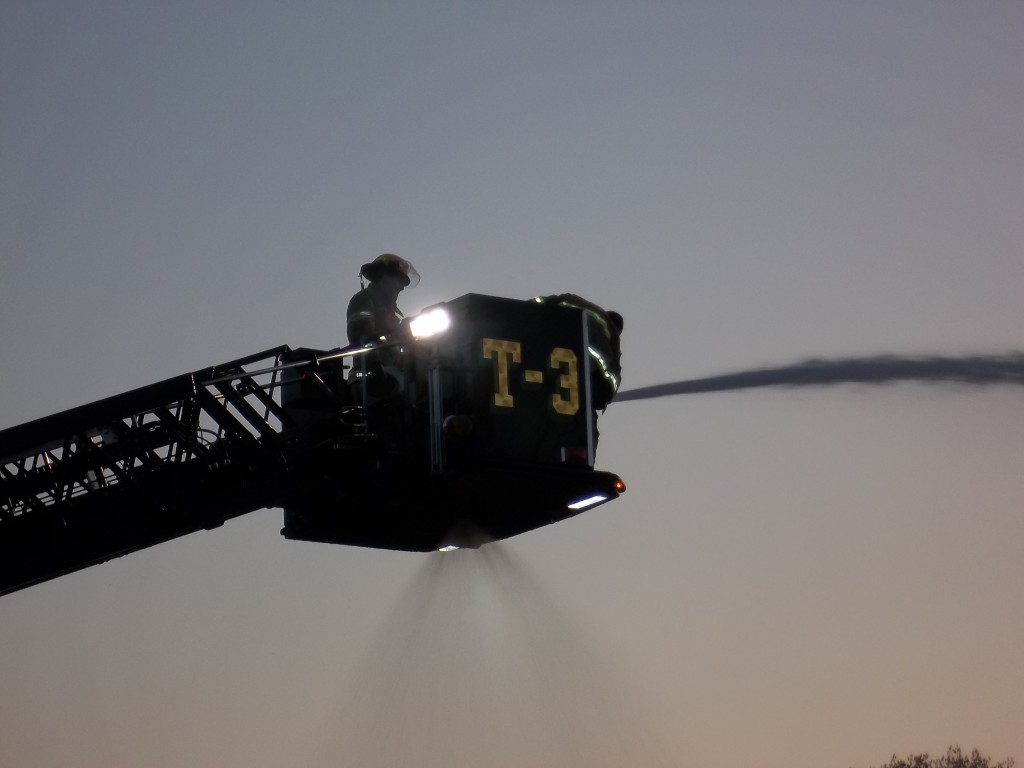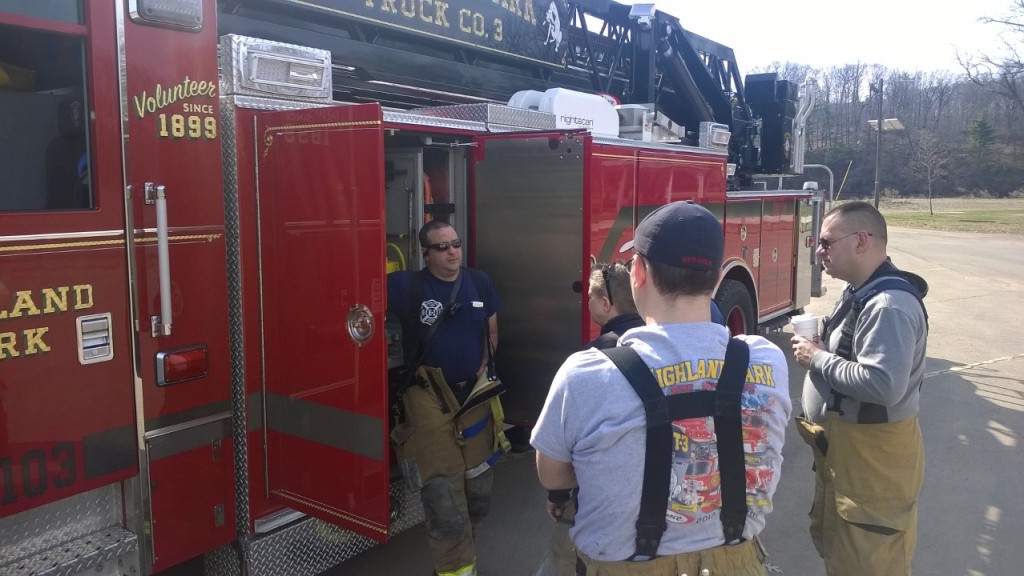
HPVFD’s Mordy Gershon, Lt. Peggy Brookes & HPFD’s Glen Seaboldt Jr. disconnect from Truck 3 & clear water from a 5-Inch LDH Supply Line
The weather has finally (finally!) made a change for the better in Central New Jersey. The snow is gone, the roads are clear and safer and Spring Training has arrived. Not the baseball variety but fire department training. Members of the Highland Park Volunteer Fire Department have taken to training outdoors more vigorously now that spring has sprung.
In the Fire Service the driver of a piece of apparatus (Engine, Truck, etc.) is often called the Chauffeur. That term makes it sound like the driver just drives firefighters to an emergency. In reality the role is much more complex and the title Driver-Operator is closer to the role and responsibilities.
For the Highland Park Volunteer Fire Department, individuals who drive a piece of apparatus to an emergency call must be qualified to do so and the process for driver qualification is extensive. For Engine Driver-Operators they must be proficient in driving the vehicle safely – keep in mind this is a large, heavy vehicle carrying not only equipment (ladders, hose, tools, etc.) but 500 gallons of water or more in the tank. Along with driving safely the Driver-Operator must know all the functions and capabilities of the piece of apparatus. That includes knowing where and how the tools operate, how to deploy hoselines, how to safely and efficiently remove the ladders and more. There is one more critical component for the Driver-Operator and that is operating the pump panel to flow water (to handlines, to the Truck, from the hydrant, etc.).
There are many inlets, where water comes in, and discharge valves (or pre-connected hoses), where water goes out. The Engine (or Pumper) sends that water out to one or more outlets. Water comes in from a hydrant or nearby water source. The whole process requires the Driver-Operator to watch pressure gauges for intake & discharge and to communicate with those receiving water.
To be qualified on HPVFD Truck 3 the Driver-Operator must drive safely, know the tools, usage and location of the tools and be proficient setting up the outriggers. After understanding the outlay & safe setup of the Truck for operations the Driver-Operator must learn the functions of the turntable (area where the ladder moves) and the aerial ladder operation. That includes flowing water through the ladder pipe. HPVFD’s Truck 3 does not pump water (that is called Quint in the Fire Service), but it can receive water from an Engine and flow water through the ladder pipe, out the nozzles off the Bucket at a high volume.
Each piece of apparatus at Highland Park Volunteer Fire Department is unique. Even Engine 1 & Engine 2, both Seagrave Engines that look nearly identical differ greatly.
Now that the weather is nicer you may see the Engines & Truck 3 moving around town more as we work hard to learn, train, drill and be ready for any emergencies that happen within Highland Park. Thank you as always for reading & supporting us.





Speak Your Mind